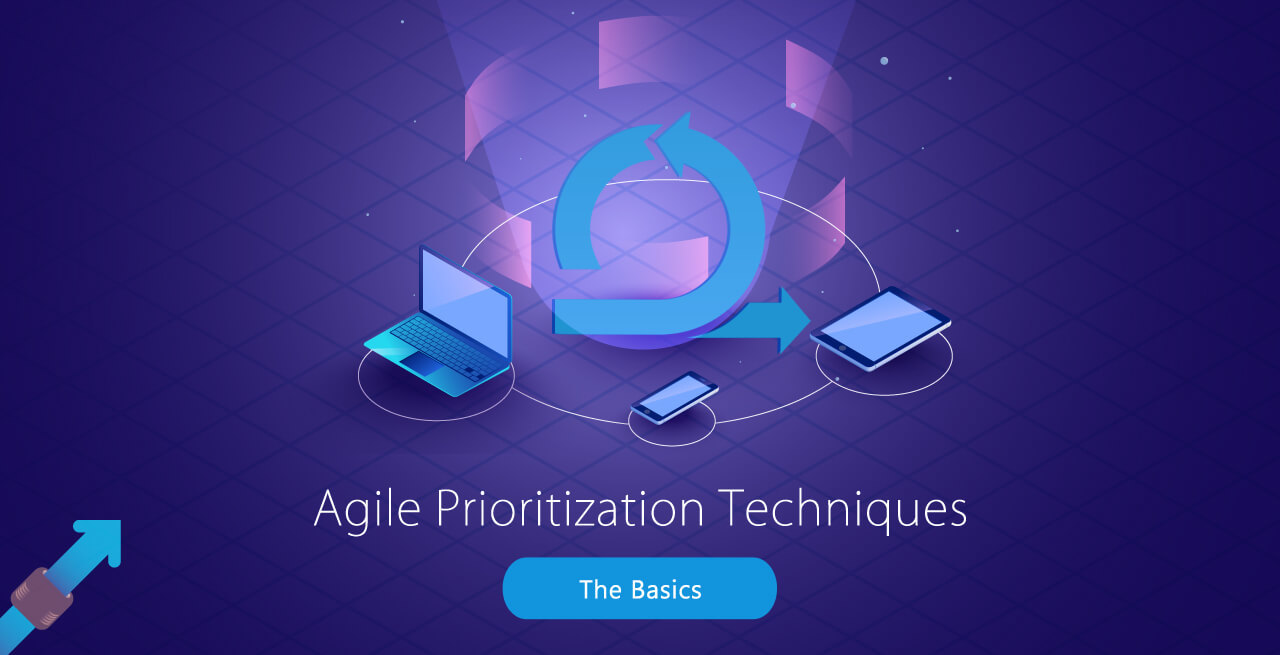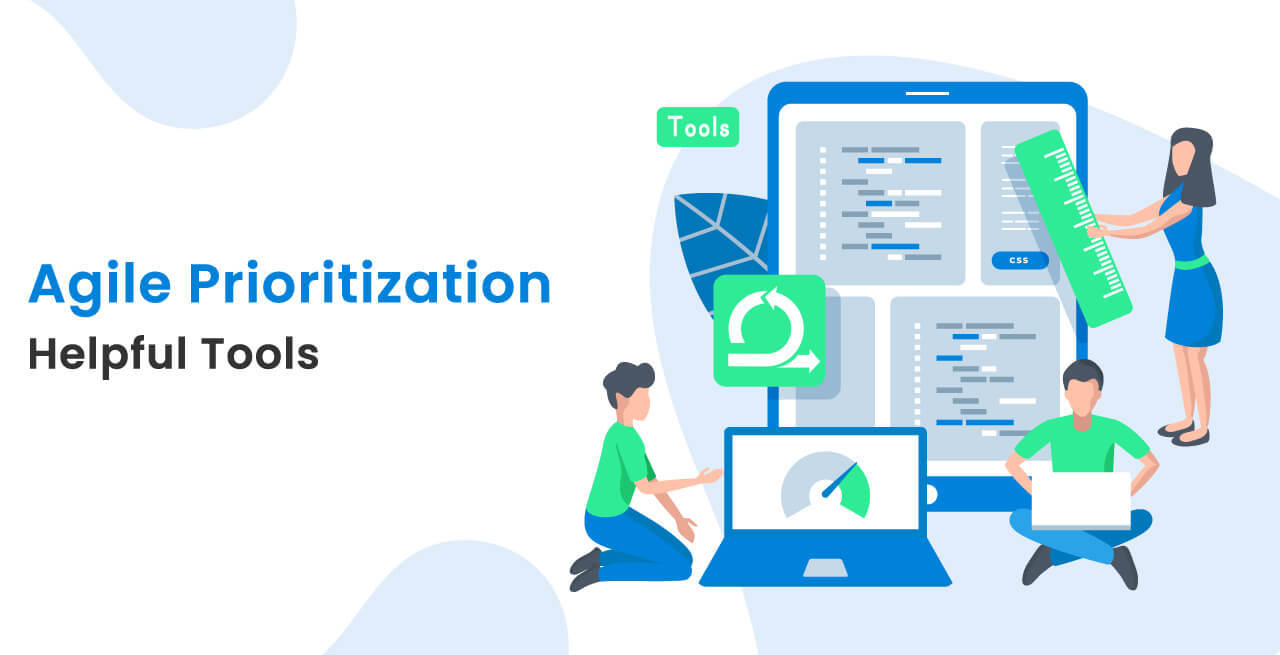How Agile Method Can Help Organize Your Life?

The love for to do lists is a mature one (and an acquired taste) and it is a great way to keep an eye on all that needs to be done, and how far down the list we have come.
When it comes to actually completing these tasks, it is a whole new ball game altogether!
Deciding which tasks you should work on first can be quite a challenge. It is tempting to start with the smaller tasks first as the rush you get from checking stuff off of your list can give you quite a high. But what happens when your to do list goes on and on! You are so intimidated by the list that you can’t even figure out how to check these little tasks off as well.
You might be one of those, for whom the to do lists just don’t work! This is where you should give Agile prioritization technique a good old try. This technique makes sure that you get the most critical things done first!
The basic idea here is to break the tasks down into smaller, manageable subtasks and then rank them in order of importance.
What is Agile and how’s it different from the Waterfall model?
Software developers often struggle with time and budget when it comes to completion of all project requirements.
In a bid to confront and handle this issue, a group of software developers came up with Agile in 2001.
Before Agile came into being, the development teams from all over the world followed the Waterfall model. Here, the development team is given a long and complex set of requirements and it is expected that all the requests should be completed in the allotted timeframe and under budget.
In the Waterfall model, time, scope, and budget are all fixed. However, in the Agile way of doing things, it is recommended that at least one of these components stays fixed.
In general, this flexible element is – the scope. Here, the company works alongside the development team to quantify the scope of the project that can be delivered in the fixed timeline and on a fixed budget.
This means that even if the company may have 100 requirements, the developers may only be able to complete 10 of them with the time and budget limitations imposed on the project. This way, the company or the business representative would choose the 10 most important requirements and prioritize them so that at least an MVP may be released within the timeline.
Agile Prioritization Techniques – The Basics
Building a massive website or planning a bachelorette, no matter what your project may be, it is bound to consist of multiple tasks with their own timeframes and budgets. According to Agile, the best way to take them on is by creating a ranked list of priorities. You can manage and track these priorities in a platform where you schedule weekly tasks.
What is Ranked Priority in Agile?
This means that if you have a list of 10 tasks, they would be ranked from 1 to 10. The idea is that you can’t assign the same number or priority to two different tasks or in other words, no two tasks can be priority 1, one of them has to be ranked 2.
It is a common tendency to attach the highest importance to each and every task, however when you try and practice relative prioritization you are forced to compare each individual task to all the others. This eventually lets you determine the importance of each one of them.
Let’s say you were building an on-demand mobile app and you have only two tasks left in the project. But you only have the budget and timeline for just the one task, and it means that you can either set up a shopping cart for accepting payments or create a blog. Both the tasks are important for the project but of course the priority is high on the shopping cart feature, instead of just the blog.
If you were not practicing comparative prioritization, it is possible that you would have some trouble taking this decision. Individually both the decisions might seem really important and you might put them on the same priority. However, when you are forced to make a choice between the two, you are bound to make the decision easily.
This too is not always foolproof. There might come a point where you would have to make a choice between accepting payments through Visa or Mastercard. Choosing to go with just one will offer a terrible user experience.
This scenario demands assigning a level of criticality to the prioritized tasks.
Agile Prioritization Techniques – Intermediate Level
So, what do we mean when we talk about criticality levels?
Let’s go back to talk about Visa and Mastercard payments. Now, we know that we cannot assign the same rank of priority, but what we can do is assign a level of criticality to them, to indicate that both the tasks need to be completed in order to have a product worth the release.
Levels of Criticality in Agile
There are four clear levels here:
- Critical
- High
- Medium
- Low
The tasks that are marked Critical must be completed. There is no question about the fact that these must be completed, because they’re vital.
The tasks marked with High level criticality are not absolutely critical, but might be what you want more than anything else on the list.
As explained by the name itself, the tasks marked Medium on the levels of criticality are the tasks you want done, but not as much as the ones marked High on priority.
The tasks marked with Low criticality levels are those that are simply nice to have! They are not instrumental to the project or product release, but might enhance the appeal of it.
The best way to make Relative Prioritization and Criticality Levels work most efficiently is by using them together. While developing an Agile list the critical tasks stay on top of the priority list as they must be completed while ranking helps you decide the order in which you must go about completing them.
These are then followed by tasks that have High levels of criticality, then Medium, and finally the ones marked Low.
Take a simple, real world example here. Let’s say you are planning a wedding, what would your to do list look like?
| Wedding To-Do List | Priority Rank | Criticality Level |
|---|---|---|
| Book a Wedding Officiant | 1 | Critical |
| Send Out Invites to Friends & Family | 2 | High |
| Buy/Order Wedding Rings | 3 | High |
| Find the Right Dresses | 4 | High |
| Find the Right Venue | 5 | High |
| Find the Right Caterer | 6 | Medium |
| Build a Menu | 7 | Medium |
| Hire your Favorite Band | 8 | Medium |
| Write Vows | 9 | Low |
| Flowers, Design, & Interiors | 10 | Low |
For tasks listed as high, medium or low criticality, the relative priorities gain a lot of importance.
What would happen if at any point in time after the completion of the critical tasks, your time or budget runs out?
In this case, the first high priority task would be the one that you want completed more than any other on the list.
Agile Prioritization Techniques – Advanced Level
The best way to get the most out of the Agile prioritization method is to break down each of the tasks listed in your to dos into smallest possible tasks.
Do you know how that helps?
One large task may consist of 7 small ones, but not all 7 may be of equal importance! When you break the large one into small tasks, you can determine the order in which they need to be done.
Let’s talk examples:
- I love going back to the example about the payments feature in your on-demand delivery website. Now this is a great example for a large task “Receive Payments” which can further be broken down pretty easily into smaller tasks like “Receive Credit Card Payments”, “Receive E-Wallet Payments”, or any number of such ‘smaller’ tasks
- Even when you are looking at your to-dos in the wedding planning list. The larger task of ‘Build a Menu’ may be broken down into a number of smaller tasks like “tasting dishes”, “find out about food preferences”, “choose a theme”, and many such more.
So going back to the wedding to do list, I would like to talk about the task of finding the right clothes. The task of clothing the entire wedding party is a biggie, but it includes a number of smaller tasks that have varying levels of criticality.
There are a million things that you would need to look into, right from finding the right wedding dress, to getting it altered to fit the bride in the best possible manner, finding the tuxedos for the groom, the groomsmen, father of the bride, then there is the matter of finding the bridesmaids’ dresses as well.
Since it all might seem overwhelming and it is quite possible that not all the smaller tasks may be of the same criticality, I can help you break it down into smaller tasks.
Looking at the whole task as one may lead to a lot of intimidation and anxiety, but it becomes a whole lot more manageable when it is broken into smaller tasks.
This is what your to do list would look after you have broken one large task into smaller ones:
| Wedding To-Do List | Priority Rank | Criticality Level |
|---|---|---|
| Book a Wedding Officiant | 1 | Critical |
| Send Out Invites to Friends & Family | 2 | High |
| Buy/Order Wedding Rings | 3 | High |
| Find the Right Clothes | 4 | High |
| Find the wedding dress | High | |
| Get the tuxedo | High | |
| Find Bridesmaids’ dresses | High | |
| Fit trials for the wedding dress | Medium | |
| Fit trials for Groomsmen & Bridesmaids | Low | |
| Find the Right Venue | 5 | High |
| Find the Right Caterer | 6 | Medium |
| Build a Menu | 7 | Medium |
| Hire your Favorite Band | 8 | Medium |
| Write Vows | 9 | Low |
| Flowers, Design, & Interiors | 10 | Low |
The wedding dress is really high up on the priority list of course, because, well let’s face it, weddings are all about the bride! So the task of finding the right wedding dress for the bride was really high up on the list, now this is not critical because well, you can get married in sweats too! But, hey, why would you?
Now going to the fit trials is on medium priority. This means while you want to do this to look your best, but this is on a lower priority than let’s say sending out invites to the friends and family or finding the right venue for the wedding.
The fit trials for the groomsmen and the bridesmaids are low on criticality levels because these can be delegated.
As you can see, by breaking the massive task down, that the actual critical task is a pretty small one and can be managed pretty easily.
In the next phase, I am going to show you how you can add a time estimate to each task. Whether it is a personal project or a project at work, there is always a time frame attached to it. This means that while planning the project, attention must be paid to figure out what could be accomplished within the amount of time allotted.
Also, setting time estimates can help in setting priorities as well. This means if you only have two weeks before the wedding and “Finding the right dresses” would take you one whole week, you need to give your priorities a once over! Are you comfortable giving up on things like music and food, just so that the wedding party is dressed impeccably?
Doing this for all the tasks on the wedding to do list makes the critical and high priority tasks a whole lot more manageable.
| Wedding To-Do List | Priority Rank | Criticality Level | Time Estimate |
|---|---|---|---|
| Book a Wedding Officiant | 1 | Critical | 1 Day |
| Send Out Invites to Friends & Family | 2 | High | 1 Day |
| Buy/Order Wedding Rings | 3 | High | 1 Day |
| Find the wedding dress | 4 | High | 1 Week |
| Find the Right Venue | 5 | High | 3 Day |
| Find the Right Caterer | 6 | Medium | 3 Day |
| Build a Menu | 7 | Medium | 1 Day |
| Hire your Favorite Band | 8 | Medium | 2 Day |
| Write Vows | 9 | Low | 1 Day |
| Flowers, Design, & Interiors | 10 | Low | 3 Day |
This table tells you that you can complete your Critical and High Priority tasks in 13 days only and to complete all the tasks listed on it you would need a total of 23 days.
This way, when you break down each of the tasks into smaller ones, you would see that the cumulative time for critical and high priority tasks coming further down.
Application of Agile Prioritization Techniques on Work and Personal Projects
Agile prioritization techniques can help you get a lot more done under constraints of time and budget irrespective of the industry and the job, in fact it works pretty well even in your personal life.
Let’s find some good examples to demonstrate the claim I just made!
- Designing a Marketing Strategy
- Buying your Dream House
- Planning a Training Session
- Planning the Remodeling of the House
- Meeting the Yearly Business Goals
- Planning the Itinerary of Your Vacation
There are multiple ways of marketing products today and for each of this approach there are thousands of tasks. It is important that the entire team puts their heads together to come up with as many ideas as possible.
The next step is to prioritize the final list of tasks so that tasks can be completed in order of priority keeping everyone focused and clear. It doesn’t end there, because you would have to take time out frequently in order to reprioritize the list on the basis of the latest data.
First you need to look for a house you like, get your offer out there, get a mortgage, get the house inspected, and go for homeowner insurance.
But that’s not all, you would need to pack everything in the current house, give stuff away that you don’t want to take along or won’t fit in the new house, and buy some new things like drapes and furniture you may need in your new house.
Applying the Agile prioritization technique will help you simplify all that you need to accomplish and prioritize things in a sane manner.
When you have a training session to plan, first you need to be clear about the topics that you want to cover in the session and then assign levels of criticality to each of it. This would allow you a certain flexibility letting you skimp on the medium and low priority topics.
The idea is to let you address the topics that you had not included in your original list, but might come up during discussions or questions during the training sessions.
In any home remodeling or renovation project there has to be a budget constraint, though time may not be an issue for everyone.
So the idea is to create a prioritized list so that you can get some clarity on the things that you really want and the things that you really need, balancing things out against the costs for each of the tasks and the overall budget you have chalked out for the entire project.
List out all the complex goals and then break them down into smaller, more manageable tasks. Next, you rank these tasks against all the other tasks in your daily/weekly tasks.
One thing to remember here is that you would have to reprioritize frequently, but this list would help you keep your long-term goals at the top of your mind so that you can decide which tasks are the critical ones so that you can focus on them first.
So, you’re planning a vacation in Switzerland, but it is impossible to go and visit every single tourist destination there. However, you can list out the destinations that you are most interested in.
Once you have this list you can use Agile’s relative prioritization techniques to make sure that you visit all the attractions that you are most excited about!
Agile Prioritization – Helpful Tools
The good old handwritten to do list can be really effective when it comes to task management and prioritization, but there are ways to manage the projects in an easier way, after you have finalized the approach you are going to adopt.
If you are looking for just the basic functionalities then you can use Google Sheets, Excel Online, or Airtable. These tools would let you create spreadsheets for free and have the same functionality as your handwritten to do lists. These tools have an edge over the handwritten lists as you can cut, paste or add rows easily when needed.
Kanban and Trello are a little more advanced as they offer some great features.
Kanban lets you do the following:
- Drag and drop tasks and prioritize them as and when needed
- Color code the tasks according to the criticality levels assigned to each of them
- Include due dates
- Share lists with all the stakeholders
- Automatically send notifications when a task is assigned to a new user
As you go looking for something more complex, and want to create backlogs, prioritize, plan releases and sprints, add estimates, and even log hours to tasks you may find Yodiz or Jira suitable for you.
If, however you are only planning a vacation with the family a traditional bare boned Post-it notes technique works great too! Here, you essentially write all the tasks on sticky notes, stick them on a wall or chart, so that you can share priorities and to dos with everyone.
In case you are using a bunch of other applications that you need to sync with each other and your chosen tool, you can simply go to Appy Pie’s Connect and stat automating your actions! It’s really simple, needs absolutely no coding, and can shave off a lot of time you were spending on the ‘not so productive’ tasks.
Wrapping it Up
To do lists that are too long can overwhelm you and stress you out! It is, therefore, important to take some time and spend it on making it more manageable with Agile prioritization techniques. This way you would be free to focus only on the tasks that are really important while letting the not so important tasks stay on the back burner.
Related Articles
- Top 10 Square integrations to enhance business workflow
- 10 Best Evernote Integrations For Collaborative Note-Taking
- 22 Non Profit Logo Examples for Inspiration
- Learn Python Programming – A Beginner’s Guide
- 11 questions to ask before creating an app for small businesses
- Why Do Hospitals Need a Mobile App?
- What is a Splash Screen? A Deeper Dive into the Art and Science of UI Introductions
- Brochure Flyer Size: A Simple Guide
- About Us Page Tips & Inspiring Examples: Create an About Us Page
- The Basics of Business Financial Accounting





